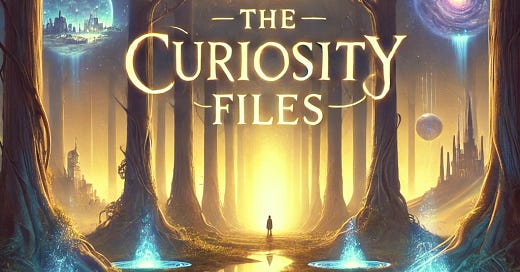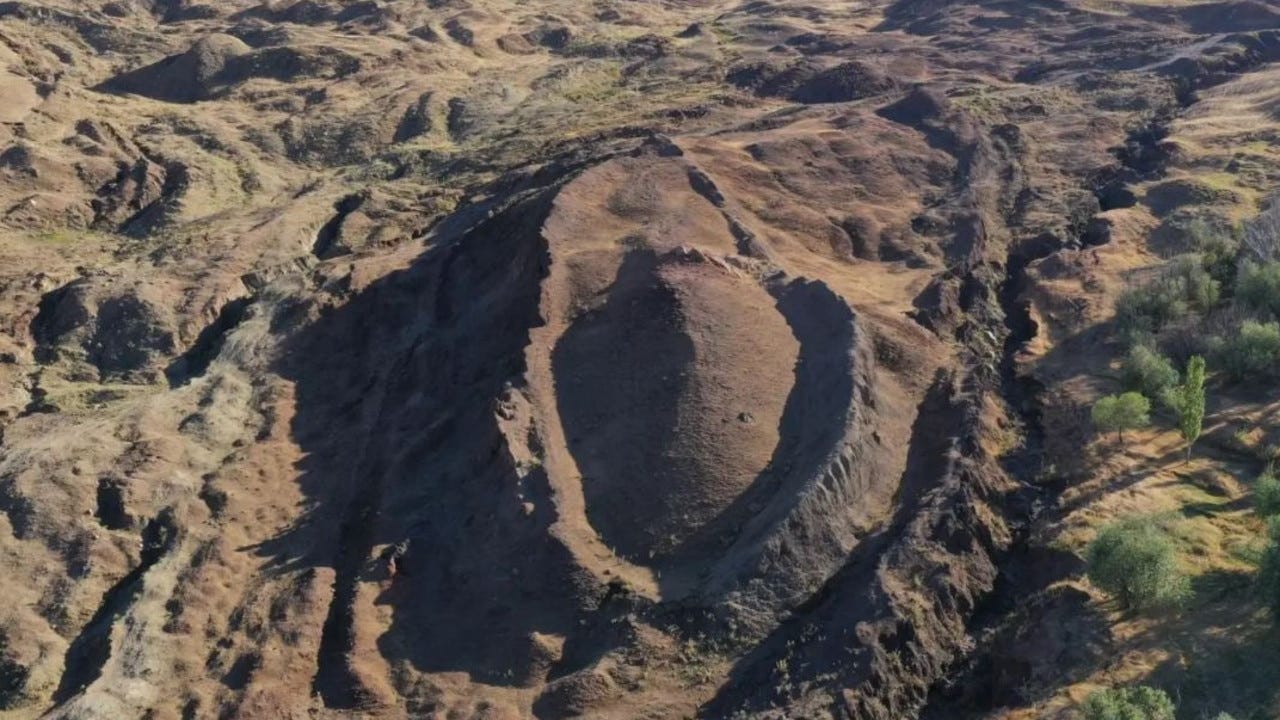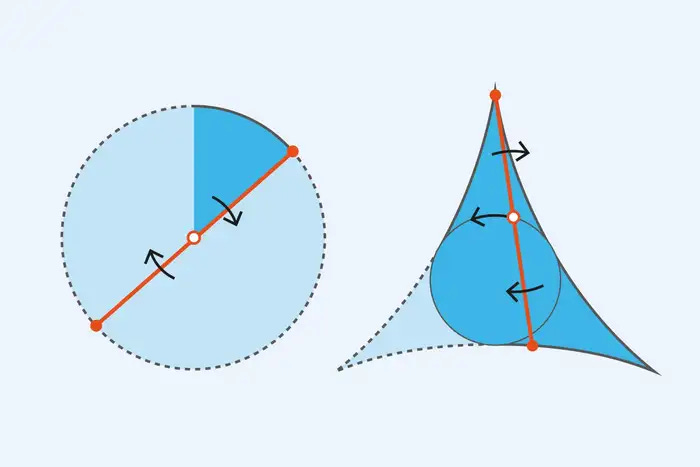“Curiosity is its own reason. Aren’t you in awe when you contemplate the mysteries of eternity, of life, of the marvellous structure behind reality?” Albert Einstein
Welcome to The Curiosity Files!
Twice a week, I’ll journey through the most fascinating discoveries across archaeology, ancient history, human origins, space, consciousness, cutting-edge science and the unexplained.
🗿 Ancient Mysteries, Archaeology & Lost Civilizations
Göbekli Tepe and Nevalı Çori: Cornerstones of a Lost Civilization
The game-changer at Göbekli Tepe came with the unearthing of domestic life. Dated between 9600 and 7000 BCE, this village, nestled among the famous T-pillars, shows people didn’t just worship here; they lived, ate, and planned their days under the shadow of their monumental creations.
The biggest coincidence in human evolution.
Farming arose on multiple continents among populations with radically different cultures and environments and with no means of communicating with each other – how did it crop up independently at about the same time?
Ancient Cave Discovery Reveals That 8,000 Years Ago, The Sahara Was Green.
The Sahara Desert was once a lush, fertile region, teeming with life and human settlements. New research from southern Morocco uncovers how increased rainfall transformed the desert into a thriving landscape thousands of years ago.
New evidence has experts believing this is Noah’s Ark.
Researchers have found that a boat-shaped mound — long believed by the faithful to be Noah’s Ark — was most likely submerged under water during a devastating flood some 5000 years ago.
Sacred text banned from the Bible reveals what really happened during Noah's Great Flood.
Known as the Book of Jubilees, this ancient text features a more supernatural, detailed and structured explanation of the events of the story of Noah.
1.4-million-year-old bones deepen mystery of who reached Europe first.
The partial jawbone from a human ancestor nicknamed “Pink” is helping rewrite the history of hominin migration into Western Europe. Researchers believe that Pink represents the oldest archaic fossils ever found in this region.
Burial bonds: 110,000-year-old human-Neanderthal grave shows shared rituals.
Tinshemet Cave in Israel shows that homo sapiens and Neanderthals interacted and exchanged more profoundly than previously understood.
The Ancient Horsemen Who Created the Modern World.
New DNA research shows that half the human beings alive today are descended from the Yamnaya, who lived in Ukraine 5,000 years ago. The Yamnaya were originally dark-skinned, with dark hair and brown eyes; their descendants in Western Europe inherited genes for blue eyes and lighter skin from the women they conquered.
Scientists reveal how Moses COULD have parted the Red Sea - and say it may not have been a miracle after all.
Computer modelling shows that a strong wind of 62 mile per hour (100kmph) winds blowing from the right direction could open a 3-mile-wide (5km) channel through the water.
🌌 Cosmic & Space Mysteries
The asteroid Bennu is even weirder than we thought.
Analysis of samples brought back to Earth from the asteroid Bennu reveal that it has a bizarre chemical make-up and is unusually magnetic.
Astronomers identify a celestial '3-body problem' lurking in the outer solar system.
New research suggests that a binary pair of Kuiper Belt objects, known as the Altjira system, is actually made up of three separate bodies orbiting one another in a complex triad. This rare orbital configuration is often referred to as the "three-body problem."
128 new Saturn moons just announced. Incredible!
Saturn already had 146 known moons, more than any other planet in our solar system. But on March 11, 2025, the International Astronomical Union’s Minor Planet Center added a whopping 128 new moons to Saturn’s count, bringing its total of moons to 274. Here they are color-coded by their MPEC release. Orange: MPEC 2025 E153, Purple: MPEC 2025-E154, Green: MPEC 2025-E155.
🧠 The Mind, Consciousness & the Origins of Life
A beautiful loop: An active inference theory of consciousness.
Could consciousness be a self-knowing loop? A bold new theory suggests our minds work by continuously modeling reality, binding experiences through Bayesian inference, and even hinting at a path to conscious AI.
Brain Circuit Discovery Reveals How Empathy Shapes Our Behavior.
Researchers have discovered how specific brain circuits process empathy, showing that witnessing others in pain activates the same neural pathways as experiencing pain directly.
The Secret to Understanding Animal Consciousness May Be Joy.
Research into animal emotions and experience has been on the rise since the late 20th century, and scientists are beginning to use these findings to help understand an age-old question: Do nonhuman animals have consciousness?
🦠 Evolutionary Oddities & Life on Earth
The Science of Aquaphotomics: Water Research Reveals Nature’s Hidden Language.
In a groundbreaking discovery at Kobe University, Professor Roumiana Tsenkova revealed that water molecules act as molecular mirrors, capable of storing and transmitting crucial biological information.
East Asian human gene that allows adult humans to digest sugars in milk likely came from Neanderthals.
Prior research has shown that many people of European descent carry genes that allow them to easily digest the sugars (lactose) present in milk, in sharp contrast to people of East Asian descent. However, in this new effort, the research team found unique versions of the lactase gene in some East Asian people along with evidence that they may have come from interbreeding between humans and Neanderthals thousands of years ago.
How nature organizes itself, from brain cells to ecosystems.
Look around, and you'll see it everywhere: the way trees form branches, the way cities divide into neighborhoods, the way the brain organizes into regions. Nature loves modularity—a limited number of self-contained units that combine in different ways to perform many functions. But how does this organization arise? Does it follow a detailed genetic blueprint, or can these structures emerge on their own?
Why cockroaches are so resilient.
What makes cockroaches so successful, and why do the vast majority of these billions of bugs remain a total mystery to science?
A Hidden Awakening in The Brain May Explain Why Females Age Slower.
The 'silent' X chromosome within female brains may not be so silent after all.
A new study has found evidence in both mice and humans that as we age, 'sleeping' X chromosomes can be 'awakened' in brain cells critical to learning and memory.
🚀 Cutting-Edge Science & Technology
China creates a powerful spy satellite that can see faces from more than 60 MILES away.
Scientists in Beijing have created 'the world's most powerful spy camera' which can pick out facial details from distances exceeding 63 miles (100km).
🌀 Beyond the Known
‘Next-Level’ Chaos Traces the True Limit of Predictability.
In math and computer science, researchers have long understood that some questions are fundamentally unanswerable. Now physicists are exploring how even ordinary physical systems put hard limits on what we can predict, even in principle.
Is Time A Story We Tell Ourselves?
The ‘quantum’ principle that says why atoms are as they are.
Pauli’s principle can be considered the apex of the old quantum theory and, unusually, survived to be incorporated into the new one.
Unifying physics’ biggest divide: Equation links Einstein’s relativity, quantum mechanics.
Gravity is not a fundamental force by itself but instead comes from the way matter interacts with the shape (geometry) of space. This interaction is driven by entropy, which is a measure of disorder in a system.
'Amazing' spinning needle proof unlocks a whole new world of maths.
What shapes are made by a spinning needle? This seemingly innocent problem has puzzled mathematicians for decades, but now a new proof is being called the biggest result of the current century as it could help solve many other tricky problems.
Which story intrigued you the most? Let me know in the comments below and provide links to any curiosities you have found!
Until next time, stay curious!








I ditto Misty, incredibly good and fascinating spread, thank you
All of them were great! I can't pick just one favorite! My daughter, however, is a big space buff and Saturn is her favorite planet so she really enjoyed learning about the discovery of additional moons.